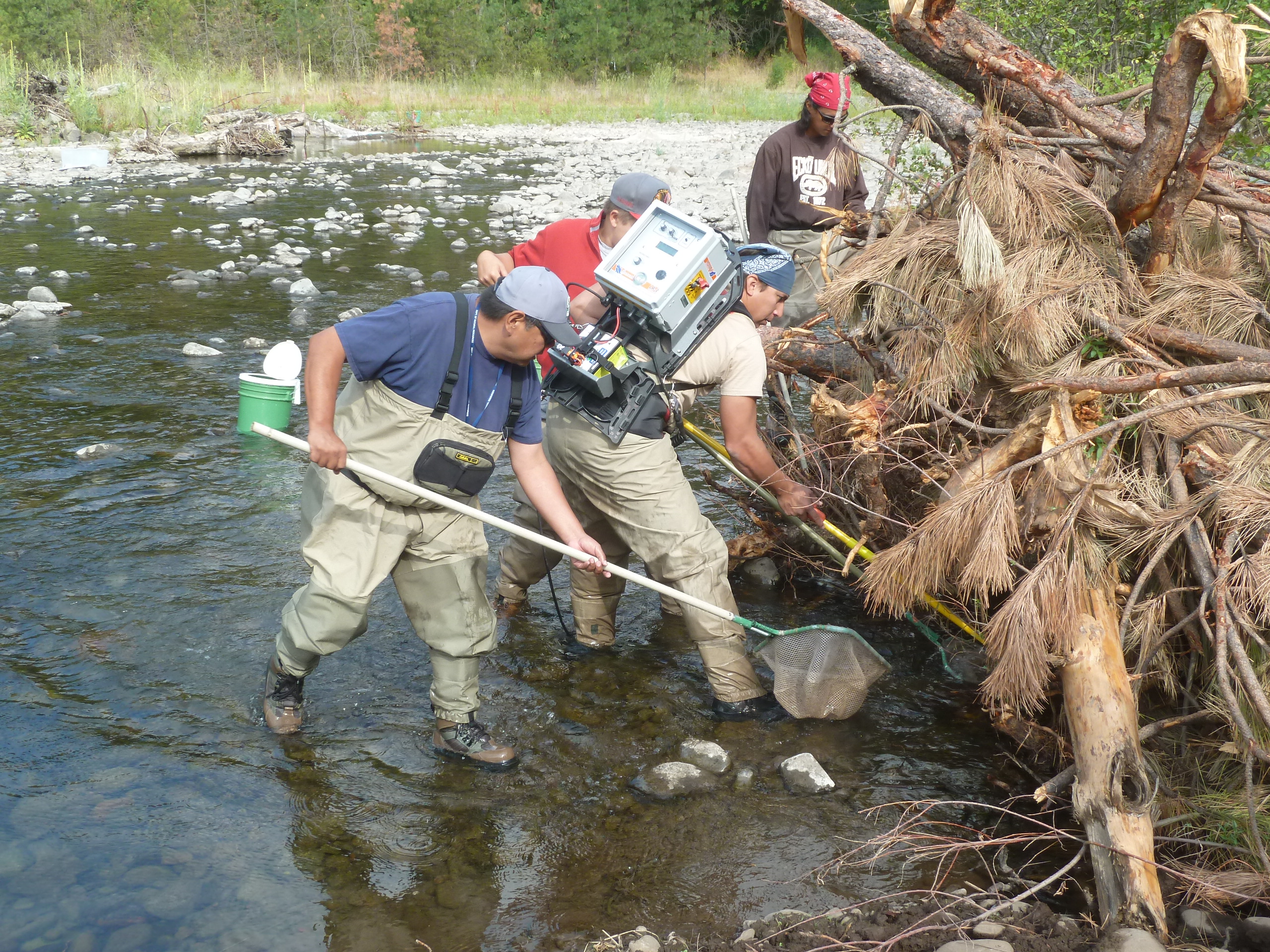Institutional Recommendation 8
Research, Monitoring and Evaluation
State, tribal and federal agencies coordinate and set priorities for research, monitoring and evaluation programs.
Current Status
In times of shrinking funding, it is even more important that managers show accountability for the expenditure of public money. Until fisheries managers can determine whether the changes from specific restoration strategies and actions are positive or negative, and by how much, fish agencies and tribes cannot realistically claim that our actions are effective. In part, this requires that research and monitoring information gathered at the reach and watershed scales by individual projects must also be aggregated to measure progress at larger spatial and temporal scales. Typically, managers must address change at the following larger scales.
Spatial scales:
- Populations (across reaches and, sometimes, watersheds)
- Evolutionarily Significant Units (ESUs) (for multiple populations and meta-populations)
- Basinwide (to address larger questions of mitigation for total hydropower caused losses)
Temporal scales:
- Brood years (to measure productivity and abundance)
- Long-term trends (to measure sustainability of progress)
Addressing management needs at these larger spatial and temporal scales will require two fundamental changes in the way research and monitoring is typically conducted today. First, managers will have to develop more consistency of monitoring across projects and agencies to allow data from multiple sources to be aggregated at the appropriate scales. Second, the present practice of using expert panels and professional judgment to evaluate change subjectively and qualitatively will have to give way to quantitative baselines against which change can be measured in objective and quantitative terms.
Because the level of natural variation in habitat conditions and salmon populations is high, both over time and between areas, it is difficult to distinguish change due to restoration actions from change due to natural variability in these ecosystems. No single agency has the resources required to make this determination alone.
The fastest way to use available research and monitoring resources more effectively is to increase the coordination of efforts between member tribes and with other agencies. Rather than pursuing a number of separate research and monitoring programs, managers should cooperate in fewer, but better designed and coordinated programs. Coordination should include the design of research and monitoring programs, the areas to be monitored, the way data are collected and analyzed, and consistent reporting on the status and trends of both habitat condition and the response of fish populations.
Fortunately, there is general recognition of this problem and efforts to address it at several levels are proceeding. Our member tribes are each developing more consistency in sampling and data analysis within their ceded areas. Research and monitoring results are regularly shared with other managers and stakeholders during workshops and conferences. Tribal scientists regularly publish articles in peer-reviewed professional journals and conferences. Each tribe also hosts local science workshops and conferences (e.g., Yakima/Klickitat Fisheries Project Science Review, Future of Our Salmon) to explore local issues in more depth.
The Pacific Northwest Aquatic Monitoring Partnership (PNAMP) is sponsoring similar discussions and development of tools to accomplish much the same thing among resource managers at the regional level.
Assessment
More effective monitoring efforts will support better decisions about allocation of limited restoration resources and, potentially, faster rebuilding of salmon populations. As more salmon populations increase in numbers and become self-sustaining, fishing regulations can be liberalized and catches will increase. This will also support more tribal fisheries in usual and accustomed fishing locations.
The growing awareness by resource managers that the monitoring and reporting of restoration successes and failures can best be addressed by coordinated action provides substantial opportunities to do a better job collectively than could be achieved by individual actions.
There are three major problems with achieving a well coordinated monitoring and reporting effort in the Columbia Basin. First, the technical issues are complex, thus, it will take some time to address and implement effective coordinated actions. Second, an appropriate forum and infrastructure to support inter-agency discussions and projects must be maintained. The PNAMP project may be an appropriate forum to address this need. Finally, a regular and effective dialog between researchers and managers is needed to incorporate the results of research and monitoring into management and restoration decisions.
A coordinated monitoring program that can effectively detect change in the conditions of freshwater ecosystems and salmon populations will be a keystone for improving salmon restoration efforts in the future. Present tribal and regional discussions on these efforts are converging and providing noticeable progress. The discussions should continue and provide a basis for improved research, monitoring and data-sharing actions. The information generated from these efforts should be used to guide restoration actions in an adaptive manner until the objectives of this Plan are achieved.
New or Modified Actions
- Continue collaborative efforts, such as the Anadromous Salmonid Monitoring Strategy, to improve the coordination of research, monitoring and data-sharing efforts.
- Build tribal capacity to implement regional best research, monitoring and data management procedures.
- Replace the use of expert panels and professional opinion to evaluate restoration by establishing quantitative baselines against which to measure the rate and amount of progress in restoring anadromous fish populations.
- Increase collaborative efforts to analyze and interpret research and monitoring data within a life cycle context.
- Continue present series of tribal-sponsored science conferences. Develop additional methods to effectively communicate research and monitoring results to managers and stakeholders.







